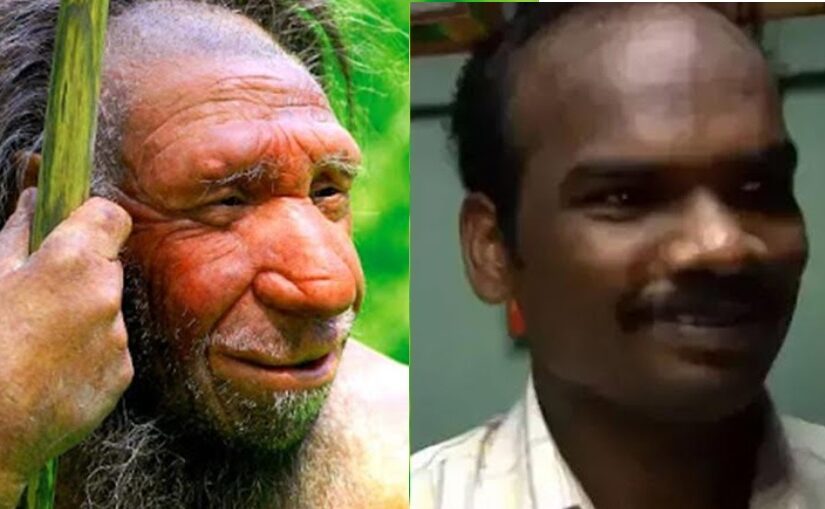In a quiet village near Madurai, Tamil Nadu, a man named Virumandi Andi Thevar lives a life that, on the surface, seems unremarkable. A systems administrator by profession, he blends into the rhythms of rural India—until you peer into his DNA. There, hidden in the double helix of his chromosomes, lies a story that stretches back 70,000 years. A story that may rewrite what we know about the first humans to settle in India—and perhaps, the world.
This is not science fiction. It is the result of a groundbreaking genetic study led by Professor R. Pitchappan of Madurai Kamaraj University, in collaboration with the Genographic Project, a global initiative launched by National Geographic to trace human migratory history through DNA. What they found in Virumandi’s blood was astonishing: a genetic marker known as M130, one of the oldest known Y-chromosome lineages outside Africa.
The M130 marker is not just a random mutation. It is a breadcrumb in the trail of human migration. Scientists believe that modern humans first left Africa around 70,000 years ago, hugging the southern coastline of Asia as they spread eastward. Some of these early migrants settled in what is now southern India. The M130 marker is a genetic fossil of that journey.
When Professor Pitchappan and his team began testing DNA samples from tribal populations in Tamil Nadu, they were searching for clues to this ancient migration. What they found in the village of Jothimanickam, about 50 kilometers from Madurai, was a revelation. Thirteen individuals, all from the same extended family, carried the M130 marker. Among them was Virumandi.
“This young man and 13 members of his nine-generation clan carried the same marker in their genes,” said Dr. Pitchappan. “It means that his ancestors in all probability settled in this village several generations ago”.
The implications of this discovery are profound. It suggests that the descendants of the first humans to arrive in India are not just historical abstractions—they are living among us. And they are not confined to remote tribes or isolated communities. They are part of the modern Indian mosaic.
Virumandi belongs to the Piramalai Kallar community, a Tamil-speaking group with deep roots in the region. His discovery has sparked both scientific curiosity and cultural pride. “This is God’s gift to me,” he told reporters. “To be told that my roots go back to 70,000 years. They used to say that our village of 700 people had spawned from just three ancestors, and I had often wondered from where and when they came. Now I have the answer: they came from Africa”.
The M130 marker is part of the Y-chromosome, which is passed down from father to son. Because it does not recombine like other chromosomes, it preserves a relatively unbroken record of paternal lineage. By analyzing mutations that accumulate over generations, scientists can construct a genetic tree that traces back to a common ancestor.
In the case of M130, that ancestor likely lived in East Africa around 70,000 years ago. His descendants were among the first to leave the continent, crossing the Red Sea and moving along the southern coast of Asia. Some reached India, where they settled and diversified. Over time, their genetic signature became diluted by later migrations. But in isolated pockets—like Jothimanickam—it remained intact.
“There is no other marker older than M130 in India,” said Dr. Pitchappan. “This way we have been able to identify the first human settlers in India, who obviously came out of Africa. Because all later migrations do not have this marker, it is evident that they were the first ‘Indians’”.
The discovery of M130 in Tamil Nadu adds weight to a growing body of evidence that India was not just a recipient of human migration, but a launching pad. Some geneticists argue that South Asia may have served as a staging ground for further migrations into Southeast Asia, Australia, and even Europe.
This challenges older models that placed the cradle of civilization squarely in the Middle East or Central Asia. Instead, it suggests that India played a central role in the peopling of the world.
The debate is far from settled. Some researchers, like Michael Petraglia of the University of Oxford, argue that humans may have arrived in India even earlier—perhaps 74,000 years ago, before the massive Toba volcanic eruption that blanketed the region in ash. Excavations in the Jurreru Valley have uncovered stone tools beneath the ash layer, suggesting a pre-Toba human presence.
What makes the story of Virumandi so compelling is that it puts a human face on deep time. Genetic studies often deal in abstractions—haplogroups, mutations, migration models. But here is a man, living in a modest home in Tamil Nadu, whose DNA carries the echo of humanity’s first footsteps out of Africa.
It is a reminder that history is not just written in books or carved in stone. It is inscribed in our bodies, passed down through generations, waiting to be decoded.
The Genographic Project, which began in 2005, has collected DNA samples from hundreds of thousands of people around the world. Its goal is to map the migratory history of the human species. In India, the project has revealed a complex tapestry of genetic lineages, shaped by millennia of migration, conquest, and cultural exchange.
But it has also highlighted the resilience of ancient lineages like M130. These markers are not just relics—they are living threads in the fabric of modern identity.
As genetic testing becomes more accessible, more people may discover unexpected connections to the deep past. For some, like Virumandi, it is a source of pride. For others, it may challenge long-held assumptions about ancestry and belonging.
In a world obsessed with the future, the story of Virumandi Thevar is a powerful reminder of the past. Not the past of kings and empires, but the deeper past—the story of how we came to be. It is a story written not in ink, but in blood. And it begins, as all human stories do, in Africa.
But it continues, in villages like Jothimanickam, in the DNA of a man who never imagined he was carrying the legacy of the first Indians.
![]()

